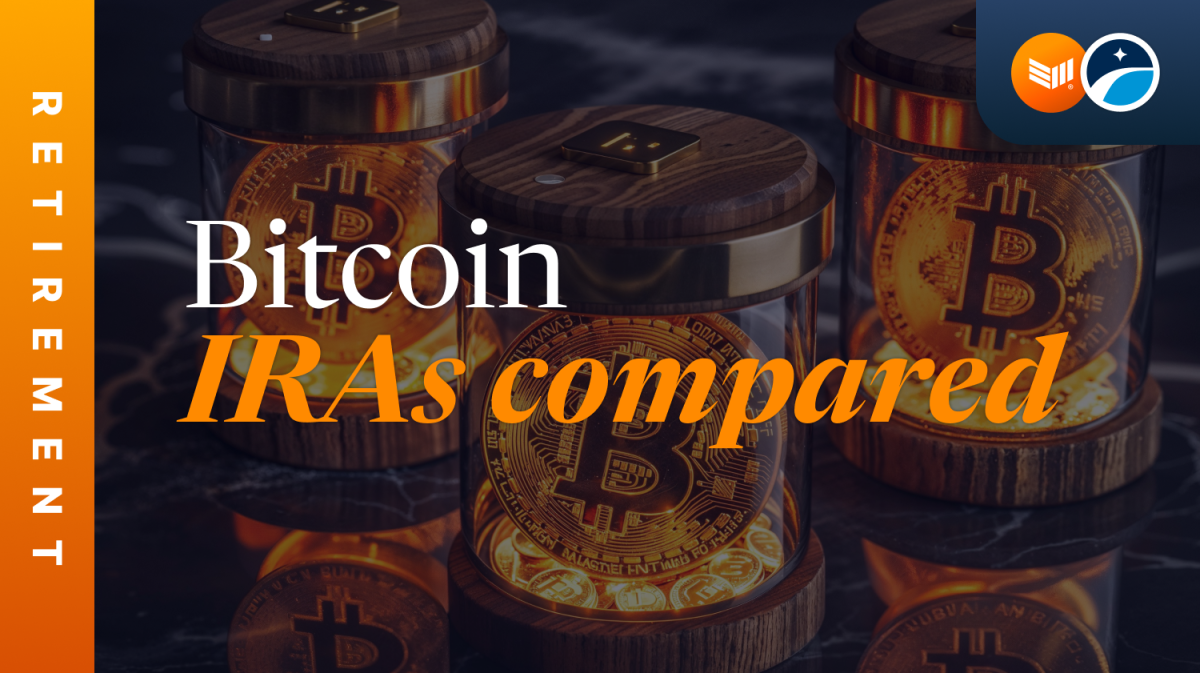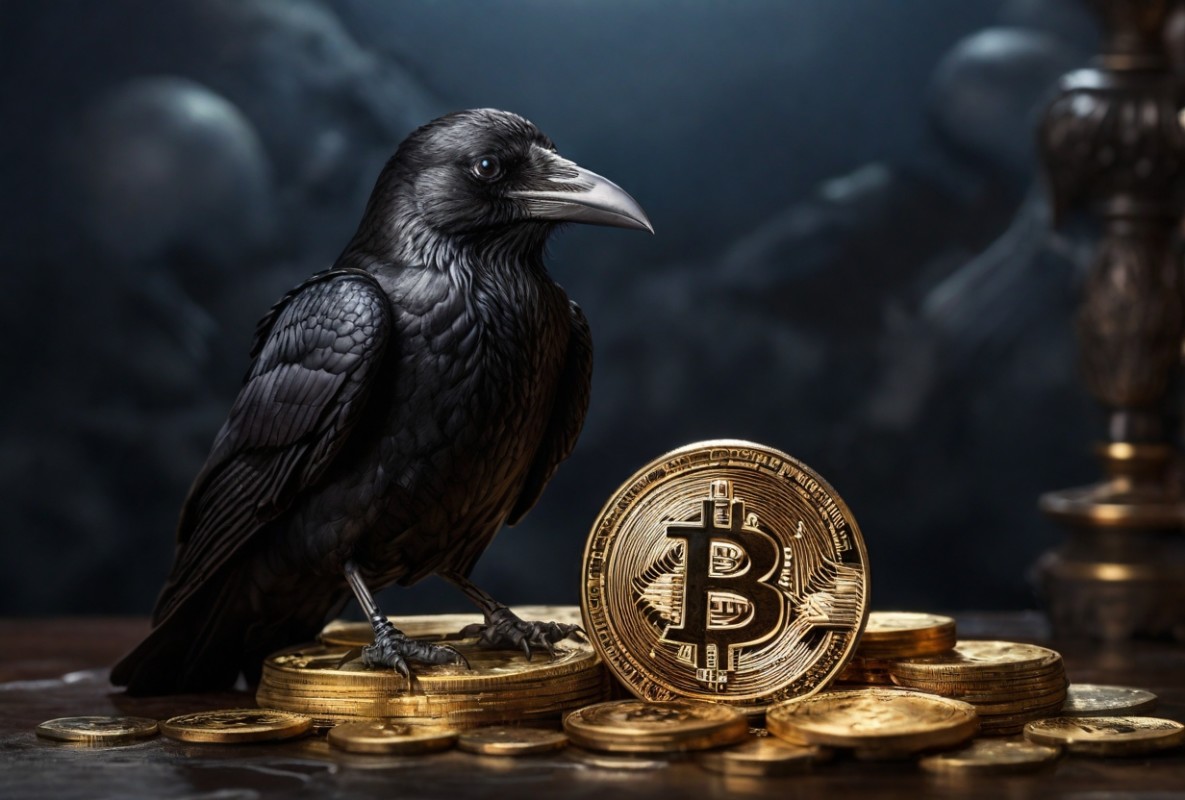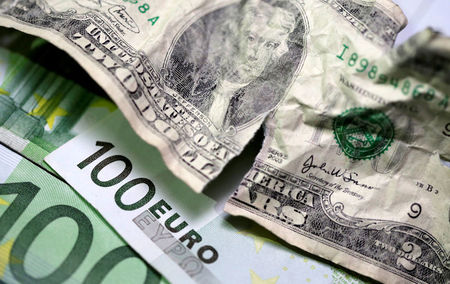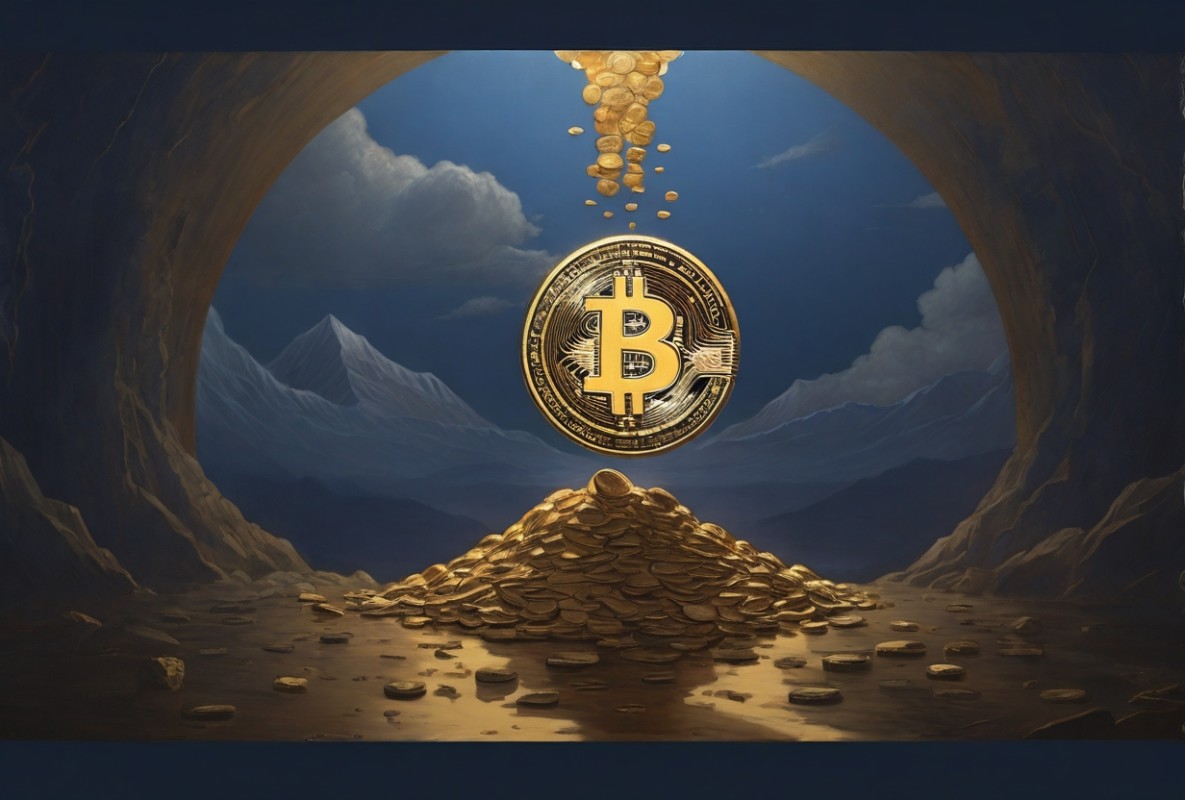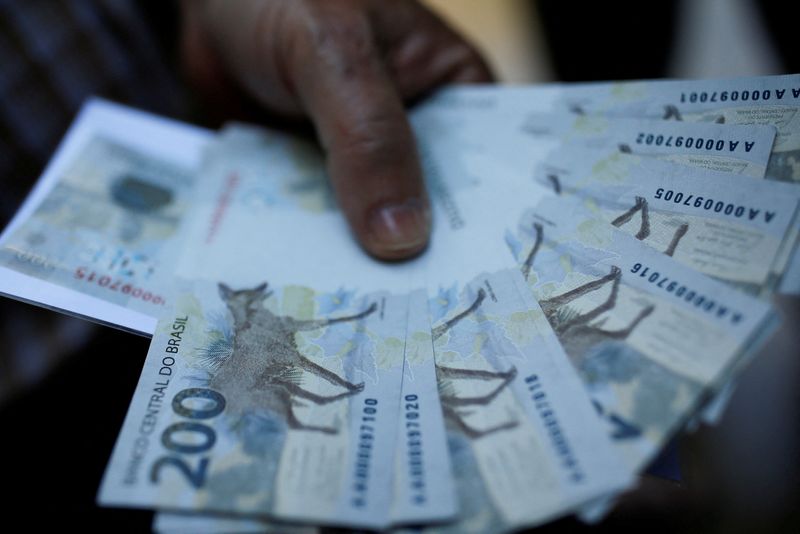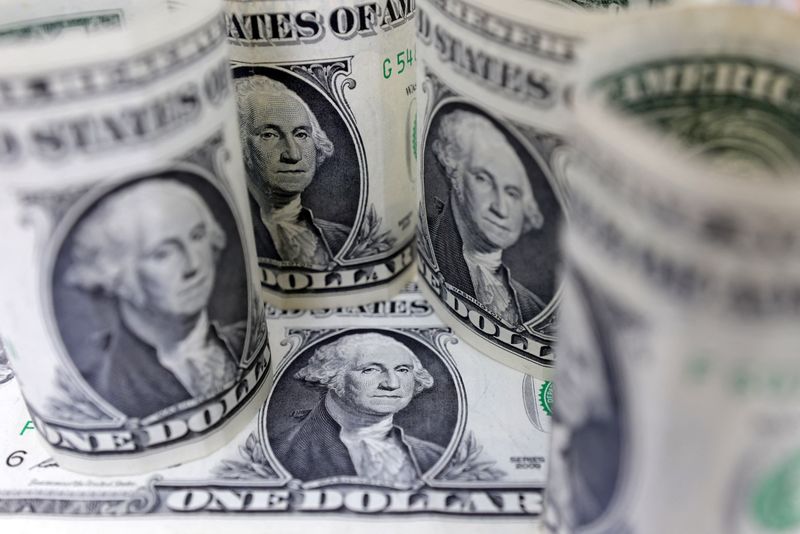Month: February 2024
Nigeria Blocks Access To Coinbase, Binance and Kraken As Naira Falls To Record Lows
Nigeria has taken drastic measures in to attempt to stabilize its plummeting national currency, the naira, by blocking access to major cryptocurrency exchanges, reported the Financial Times. This move comes as the Nigerian government attempts to crack down on currency speculation amid record lows for the naira.
JUST IN: 🇳🇬 Nigeria blocks access to Coinbase, Binance and Kraken as their national currency falls to record lows, Financial Times reports.
— Bitcoin Magazine (@BitcoinMagazine) February 22, 2024
The Nigerian Communications Commission (NCC) issued orders to telecoms companies late on Wednesday to restrict consumer access to websites of major cryptocurrency platforms like Binance, Coinbase, and Kraken. As a result, consumers experienced only intermittent access to these sites on Thursday.
Bayo Onanuga, Special Adviser Information and Strategy to the President of Nigeria, took to X to say a local report of the government blocking access to the exchanges was correct.
Premium Times is correct.
Forex Crisis: Nigerian govt blocks Binance, OctaFX, Coinbase, others https://t.co/cq6DoxqInj
— Bayo Onanuga (@aonanuga1956) February 22, 2024
Cryptocurrency exchanges have played a big role in establishing unofficial market prices for the naira, with platforms like Binance often serving as benchmarks for local foreign currency exchange rates. The government’s move to block access to these platforms is an effort to regain control over the currency valuation of the naira.
“Binance, facing regulatory showdown in many countries, and causing disruptions in the currency market, should not be allowed to dictate the value of the naira, not on its crypto exchange platform,” Onanuga further stated. “Crypto should be banned in our country or else this bleeding of our currency will continue unabated.”
Nigeria’s adoption of rash methods to defend its currency, including shutting down price-setting websites and declaring certain cryptocurrency entities illegal, highlights the challenges the country faces in managing its economic stability. Nigeria’s national currency has lost over 70% of its value since their central bank lifted its dollar peg in June.
Bitcoin IRAs Compared: Spot ETF vs. No-key-control vs. Physical bitcoin
If you understand why bitcoin is an asset to hold for the long term, you may also wonder how to take advantage of retirement tax structures to minimize your tax expenditures. There are many different ways to approach holding bitcoin in an IRA, and as with everything in bitcoin, each has its trade-offs. Let’s look at how the many different bitcoin IRA approaches compare.
Sovereignty and appreciation
Before we can cover these approaches to bitcoin retirement savings, you have to understand the two most important benefits you receive by holding bitcoin: financial sovereignty and purchasing power. That is, the freedom you gain from holding the private keys to a digital bearer asset that exists outside the traditional financial system, and the appreciation of that asset as measured in fiat terms.
Click the above image to learn more about Unchained and Bitcoin Magazine’s collaborative custody partnership.
The four most common approaches to holding your bitcoin in an IRA have different trade-offs related to these two benefits:
Product
Sovereignty
Price appreciation
Bitcoin futures ETF
No control of keys
Indirect exposure to price
Bitcoin spot ETF
No control of keys
Mostly direct exposure to price
Bitcoin IRA without key control
No control of keys
Direct exposure to price
Bitcoin IRA with key control
Full control of keys
Direct exposure to price
Beyond these two factors, the other differences are a bit more nuanced. Let’s take a closer look.
Four ways to hold bitcoin in an IRA
Bitcoin futures ETF in a brokerage IRA (BITO)
One previously-popular way to get exposure to bitcoin with minimal effort was with a futures ETF like ProShares Bitcoin Strategy ETF (BITO). This fund intends to offer investors managed exposure to bitcoin futures. Futures are financial contracts that require involved parties to perform a transaction at a given future date and price. You get no key control—a futures ETF like BITO doesn’t even hold physical bitcoin itself. BITO is still available, but its popularity has declined since the launch of bitcoin spot ETFs in 2024.
Bitcoin spot ETF in a brokerage IRA (IBIT, FBTC, GBTC, etc.)
Bitcoin spot ETFs launched in 2024, giving investors access to a bitcoin-proxy financial product with far more direct exposure to bitcoin’s price than the previous futures and trust products. Like bitcoin trusts and futures ETFs, you do not have key control over any physical bitcoin with these products. However, spot ETFs do themslevs hold physical bitcoin with custodians like Coinbase, Fidelity, and Gemini. They track the price of bitcoin closely because authorized participants have the right to create and redeem shares of the ETF, keeping price in line with its net asset value.
Bitcoin IRAs without key control (iTrust Capital, BitcoinIRA)
Many bitcoin IRA products allow you to buy real bitcoin but don’t offer any key control, like iTrust Capital, BitcoinIRA, Swan Bitcoin IRA, and others. Like the bitcoin proxy products, these products provide no control over your private keys. The largest benefit is that you get direct exposure to the price of bitcoin because physical bitcoin is held on your behalf. In these products, bitcoin is titled to you and in some cases it is possible to send it in-kind if you change IRA providers. You may also have more flexibility with trading options compared to a spot ETF.
Bitcoin IRAs with key control (Unchained IRA, Choice)
Key control is important for various reasons, but it’s all rooted in bitcoin principles more broadly. Bitcoin allows you as an individual to custody your wealth in a way that was never possible before. If you don’t hold your keys, you ultimately hold a bitcoin IOU, and the key holder can make arbitrary decisions like change associated fees, rehypothecate, and more. Another often-ignored component is that companies holding your keys can fail; you become an unsecured creditor if a company becomes insolvent.
There are bitcoin IRA products on the market that offer complete control of your bitcoin private keys and direct exposure to the underlying asset’s price movement. With these products, you eliminate single points of failure by controlling the keys to your physical bitcoin held in a multisig wallet. One of these products is the Unchained IRA.
Bitcoin IRA comparison: Spot ETF vs. no-key-control IRAs vs. key-control IRAs
Convenience
Holding bitcoin proxies like the spot ETF in your preexisting IRA account will be the easiest way to get exposure to the bitcoin price. It’s as simple as typing in a ticker symbol and buying the product, as long as your brokerage offers it. If you’re new to bitcoin and want to experiment with exposing your portfolio, the spot ETFs also let you easily trade in and out of your position at will—albeit only during market hours in most cases. As many trade-offs as these products have, they win this category.
No-key-control bitcoin IRA products are the clear runner-up for convenience since you don’t have to consider key management practices while still getting direct exposure to the bitcoin price.
Price correlation
If you’re holding a bitcoin proxy like a spot ETF in a brokerage account, you aren’t holding real bitcoin, but you are still holding a well-engineered financial tool that correlates well with the bitcoin price with minimal slippage. Still, the spot ETFs aren’t perfect—nothing will do better than holding bitcoin itself when it comes to price correlation.
Whether you hold the keys to your bitcoin or not, products that allow you to hold physical bitcoin will track the price of the underlying asset, which is preferable for most investors.
Counterparty risk
Products like the spot and futures ETFs, as well as the no-key-control IRAs, don’t offer you the benefit of key control, which means you’re exposing your wealth to many layers of counterparty risk. For the spot ETFs, for example, you’re trusting the custodian (likely Coinbase, Fidelity, or Gemini), the ETF issuer itself, and the broker where you have a retirement account.
Another side effect of these proxy products and no-key-control IRAs is that you may eventually have to sell and take a distribution in U.S. dollars. With bitcoin IRAs with key control, you can withdraw real bitcoin from your account without penalty at retirement age. As the world shifts to a bitcoin standard, you may not need or want to sell it back to fiat when the time comes.
The adage of old remains true: “not your keys, not your bitcoin.” The bitcoin protocol was built to give you the opportunity to take control of your wealth. Controlling your keys minimizes counterparty risk and eliminates single points of failure.
Cost
The cost spectrum across all the bitcoin IRA products is broad, as is the value you receive.
The spot ETF products are relatively affordable—charging as little as 0.2%, which is far better than the hefty 1-2% that you’d pay for the convenience of GBTC or BITO before the spot ETFs were available. Still, the annual fees on spot ETFs can add up to tens of thousands of dollars, depending on your holdings and the appreciation of bitcoin.
Among the bitcoin IRAs that don’t offer key control, iTrust Capital is currently the most affordable approach to holding bitcoin in an IRA. On the other hand, competitors like BitcoinIRA are a bit more mysterious as to what their fees are—making it unclear how they compare on this front.
The Unchained IRA has a higher one-time setup fee, but lower annual fees and trading fees, leading to much lower fees over time.
Key takeaway
The only way you can hold bitcoin in an IRA while gaining the two benefits it was built for, limited supply and key control, is to hold bitcoin in a key-control bitcoin IRA.
While a key control IRA may require more from the client to learn to hold bitcoin keys correctly, we believe it’s time well spent to receive a basic bitcoin custody education. Multisig custody, in particular, eliminates single points of failure and trusted third parties.
Spot ETFs held in a brokerage account can also be a decent option if you want to immediately get exposure to bitcoin as you learn more about the technology and the importance of key control. But know that they can be costly in the long term, especially if the price of bitcoin rises dramatically over the coming years, and expose you to multiple layers of counterparty risk.
Onboarding, bitcoin IRAs, and beyond
If you already hold a bitcoin proxy product in an IRA at a traditional financial institution, we make it easy to roll over into physical bitcoin with key control through an Unchained IRA. And if you already have a physical bitcoin IRA, we can even take rollovers in-kind if your provider supports withdrawals.
We’re also your partner for Concierge Onboarding and beyond, so you can get help from bitcoin experts on your self-custody journey—no matter where it takes you. Anyone can learn to securely hold their bitcoin keys with the help of our Concierge team. Book a complimentary consultation for more details.
This article is provided for educational purposes only, and cannot be relied upon as tax or investment advice. Unchained makes no representations regarding the tax consequences or investment suitability of any structure described herein, and all such questions should be directed to a tax or financial advisor of your choice.
Originally published on Unchained.com.
Unchained Capital is the official US Collaborative Custody partner of Bitcoin Magazine and an integral sponsor of related content published through Bitcoin Magazine. For more information on services offered, custody products, and the relationship between Unchained and Bitcoin Magazine, please visit our website.
Why I Bitcoin
Readers of my blog know that I started dabbling in buying Bitcoin in late 2022.
In fact, it was the best performing asset out of any of the names I wrote that I was watching for 2023. Similarly, and not to give away the suspense, I added Bitcoin exposure once again to my list of 24 stocks I’m watching for 2024.
So, it may not have been that much of a surprise when my subscribers saw me on X yesterday proclaim that my days of disparaging Bitcoin were over. However, given that I have about 210,000 more Twitter followers than I do Substack subscribers, it is safe to say there were still plenty of people who were caught off guard by my mea culpa, and, somewhat alarmingly, even more people who were voraciously willing to immediately sing my praises and welcome me to the community.
As far as the welcome goes, all I can say is, I genuinely appreciate it. I’d be lying if I said that a large group of people proclaiming me to be making an intelligent decision didn’t make me somewhat nervous. However, as I said in my post on X yesterday, I know I am also surrounded by people who are much smarter than I am.
As I also said in my post yesterday, I have been watching people that I know are much smarter than I am, specifically those in the sound money community, sing the praises of having exposure to bitcoin for years now. For me, that was the hardest thing to ignore. I felt like if I was looking to people like Lawrence Lepard, Luke Gromen and Lyn Alden for their incredible insights on the broken monetary system, why couldn’t I at least try to take them semi-seriously when it came to their take on Bitcoin? I knew deep down there was work they had done and an understanding they had achieved with Bitcoin that I wasn’t close to, despite understanding some of the basics.
I started to get a taste of this understanding while listening to my friend Lawrence Lepard describe Bitcoin as an invention all its own on this December 2022 podcast – comparing it as a parallel to the Internet, instead of just another Internet software application. This video is queued up to the first moment I changed my thinking about Bitcoin – Larry’s explanation starts at 36:00:
He referred to it in this interview as “the invention of digital scarcity”. Honestly, I had no idea what that meant, and the idea of “digital scarcity” didn’t seem too novel to me. I just shrugged and thought, “If Bitcoin can do it, other cryptocurrencies can do the same.” I asked myself, “How can something be scarce when it doesn’t exist tangibly and definitely didn’t exist 15 years ago?”
Of course, like a key uses multiple teeth in concert to open a physical lock, Bitcoin only started to make sense to me once I understood it in the context of how the network works – all of the teeth of the key (the ideology, the network, the cryptographic invention) line up together, helping unlock its understanding. First, I had to understand how the cryptography of Bitcoin worked and why it is essentially unhackable and about as secure as something can be for the time being. I did that by watching this video:
Next, I had to understand the system of checks and balances that the network creates to ensure the integrity of itself. Sure, I understood the idea of a decentralized ledger that everybody could check – that was relatively simple. What I didn’t really understand was how having a majority of the nodes on the network, running the same code, essentially kept Bitcoin sacrosanct for as long as people decided they wanted it to be. I had heard about forks in the network, but now I understood them. They are points in time where people thought they knew best and should rewrite Bitcoin code. The majority of nodes rejected those ideas, in doing so protected the sanctity of the original Bitcoin code.
Once I understood the cryptography and the security of the network, it then became self-evident that the larger the network gets and the more adoption it gets, the more secure and indestructible it becomes. The idea of people “banning it” or, as my one friend put it, “Satoshi just coming back to change the supply of coins whenever he wants” simply doesn’t hold much water once you understand how it works. If the people want the Bitcoin network, and they have power and an Internet connection, they’re going to get it. The network is like a slippery fish someone tries to hold onto — the harder you hold it and the more you try to control it, the quicker it slips from your grasp. If Canada bans it, it will drift to Mexico. If Mexico bans it, nodes will drift to Mauritius. If Mauritius bans it, nodes will drift to Russia. There’s always going to be somewhere on the globe – at least for the short to mid-term right now – that is going to embrace Bitcoin.
For me, it was only once I understood how the cryptography worked and how the network functioned together, in tandem, that I started to assign the all-important intrinsic value to Bitcoin. I was, and in some degree still am, in the camp that sees gold as having intrinsic value that Bitcoin does not, because of its commodity bid and far superior and longer record as a store of value. This is why, despite coming around to the idea of Bitcoin, my gold position is still larger than my Bitcoin position.
But Bitcoin advocates make compelling arguments when they point out that Bitcoin is easier to transport and easier to verify than gold. I always found myself stuck when somebody would ask me how I would take $1 billion worth of gold over the border. You just can’t. With Bitcoin, you just can. Even as exchanges are subjected to more AML and KYC regulation, the Bitcoin itself still remains an offramp from having your wealth centralized. The idea, coupled with the transmissibility and the ability to verify it anywhere in the world at any time with just an internet connection and power really do make it truly unlike anything that has ever existed before.
For me, as I said in my tweet thread yesterday, I couldn’t always figure out exactly what I was buying when I was buying Bitcoin. I’ve had to talk myself into understanding it by describing to myself it as purchasing a spot on a bedrock decentralized ledger with the highest adoption worldwide, that will potentially – not definitively – serve as the foundation for a new way to think about money. In other words, it’s as much reserving a spot on the ledger as it is an investment in the invention of Bitcoin itself. It’s a really big idea — and my brain is really small — which is why it has taken me this long to wrap my head around it. But, as they say, “once you see it, you can’t unsee it”.
And, like any other investment I make in something new that has not been fully adopted, I accept the fact that there are significant risks, and that the value of Bitcoin could go much lower, or eventually, to zero. The thing is, I just don’t see that happening anytime soon. Even in a worst-case scenario where Bitcoin doesn’t make it 100 years from now, I think its adoption over the next 5 to 10 years is already a foregone conclusion.
Specifically, listening to Michael Saylor helped open my eyes to the fact that I was buying digital property. This interview was a lengthy, comprehensive listen that I enjoyed. Whether Saylor turns out to be Bitcoin Jesus or the most misguided person in history, it’s tough to argue that he’s not exceptionally intelligent and well spoken:
This is another another lengthy, complex interview I listened to in full and at length, which helped me understand the web of all components working together that make up the Bitcoin ecosystem:
And so, when Saylor asks a question like, “How long do you think it’ll be before all cell phones and computers are bundled with Bitcoin wallets?” the answer to me simply seems to be obvious: it won’t be long. So, from an adoption standpoint, whether or not it is around 100 years from now is, for the most part, beside the point right now. It’s like the potential impact of quantum computing—I’ve heard both sides of that case and have pretty much acquiesced to the position that it’s a bridge we will have to cross when we get to it. And hey, if that reasoning is good enough for Janet Yellen watching our debt/GDP explode toward some unknown breaking point of no return for the dollar, it’s good enough for me.
But the fact that regulatory agencies have blessed Bitcoin by allowing the spot ETFs, and that I can go on Twitter and literally see commercials from super serious asset managers like Franklin Templeton and Fidelity, talking about Bitcoin as a sound money hedge, and a way to step outside of the central bank-run global monetary system, is stunning.
It’s funny how, once there are fees involved, people are happy to make what I always thought to be the morally just case for railing against central banks — the case that I have been waiting for people to publicly make for gold for a long time. Regardless, I don’t really care about your motivation when you’re making great points.
Just last week, I heard somebody say that all Bitcoin buyers are speculators, not people looking to seriously opt out of the monetary system as it exists today for the long term — and I simply don’t think that’s the truth. I think there are a lot of people out there, like me, that are just looking to diversify their way out of a broken fiat system, and Bitcoin is just one of several ways to do that.
There’s no doubt there are going to be innumerable speculators and traders. There’s no doubt there is going to be scammers and endless shitty altcoins. There’s no doubt there’s going to be fraud and money laundering, just as there is with US dollars and registered securities. But to say that’s all there is in Bitcoin is a mistake, in my opinion.
There only needs to be a small group of people who continually buy and hold going forward to eventually whittle away at and reduce the space on the ledger. If the network’s collective hash rate or adoption was falling, that’d be a concern. But for now, it isn’t. And you can’t tell me that a country like El Salvador adopting bitcoin as legal tender is “speculation.” To me, that falls closer to “adoption.” There’s a big difference between a couple of kids in a chat room trying to daytrade shitcoins and some of the world’s largest asset managers, and even some nation-states making the case for parking their digital property spot on the ledger, while millions of people globally are buying bitcoin simply to own it. The notion that everybody involved is a scammer or is trying to get rich is, in my opinion, misguided. To me, there’s a massive difference between “trying to get rich quick” and “trying to preserve wealth over the long-term”. Regardless of what Bitcoin does, my motivation will always be the latter.
The price will continue to be volatile, but it’s also pretty easy to make a case for why it will go up. If I pay $200,000 for a house tomorrow and do nothing to it, and there is no increase demand for it, but the purchasing power of the dollar falls 99% over the next 50 years, the price in dollars is still going to go up. With bitcoin, there is the tailwind of global adoption, the benefit of a limited supply, and a growing ideological awakening that supports its moral and ethical existence.
It’s been funny, listening to podcasts about bitcoin for the last few months, because everybody starts their explanation by laying out the horrors of the fiat money system. I was lucky in the sense that I already understand how the money system is, like the tides, ebbing and flowing, naturally eroding away at people’s purchasing power and transferring it to the state. This has been one of my long-held arguments for owning gold. As bitcoin continues to be adopted, it becomes a great reason for owning bitcoin, too, in my opinion. One thing I have always said about bitcoin is that I appreciate how much it has opened the eyes of people who normally would not have understood the horrors of modern monetary theory and global monetary policy.
What will be even cooler to witness, in my opinion, is the FOMO when, and if, the price once again breaches all-time highs. If bitcoin’s price continues to perform well, asset managers who now have precisely no excuse not to buy bitcoin (since there are now spot ETFs that work within the system they are allowed to play in) will be inundated with calls from their clients wondering why they don’t have any exposure to the asset, even if they don’t understand it.
And this isn’t GameStop, meaning that once price FOMO starts, there is no at-the-money equity offering to come in and dilute at higher prices. If a rush to grab “all you can eat” on the ledger starts in earnest, there will be no new supply magically coming out of nowhere to meet it. With bitcoin’s total market cap still under $1 trillion, to me, it just seems to make sense that super-rich Middle Eastern countries will likely be the next to adopt it and put it on their sovereign balance sheets.
A lot of the podcasts I’ve listened to talk about nation-states that are mining bitcoin but won’t talk about it. I believe this is happening. At some point, the lights are likely going to flip on globally and everybody’s going to see what everybody else is holding. My guess is that some oil-rich countries in the Middle East, even if they see it as simply a call option with the potential to go to zero, will dabble in putting bitcoin on their sovereign balance sheets to try and diversify themselves and make a bet on the future of money. These people drive Bugattis to work and keep tigers as pets. To say that they don’t have enough money to “speculate” on the potential future of money is laughable.
And then, once again, we fall back to the shuffle between bitcoin and the network, and how they fall into place and work in tandem together. The more major adoption it sees, the more secure it becomes, the more people want to invest in it, the more it becomes viable and mainstream. Bitcoin, to me, essentially looks like the open-source code equivalent to a self-fulfilling prophecy. The way it functions, as I said yesterday, essentially makes it a freedom-money virus. It has been unleashed, and it has become big enough that it is near impossible to stop over a short or even medium-term period of time. I thought Michael Saylor’s analogies of the network essentially being a swarm of wasps was apt. How do you stop a swarm? You may kill one or two wasps, but at the end of the day, you’re simply outnumbered. And with bitcoin, the ideology, plus the network, plus the redundancy, plus the fact that anybody can adopt it, nearly ensures that it is going to overpower its critics both in nodes and in computing horsepower.
I really look forward to doing more research on the network’s potential uses and pathways for bitcoin adoption going forward. Don’t get me wrong, I still consider bitcoin a risk asset in the sense that if adoption slows or regresses, the network becomes weaker. But the trajectory that we’re on now doesn’t suggest that is going to be the case anytime soon. There are also significant risks if core developers decide to make drastic changes or if quantum computing eventually makes the cryptography easier to crack. There’s also a risk of major western countries trying to ban, regulate, or tax bitcoin to death, and there are simply tons of unknown risks that come with the ideological adoption of a brand-new standard.
My weighting in bitcoin is at a level where I am fine with losing it all. I expect the price to fall 90% at a time more than once going forward. As several people have said, if you’re worrying about it that much, your weighting is too big. I manage the risk on owning bitcoin like I do owning call options or walking into a casino. I won’t be surprised or devastated if and when I lose it all.
But for me, ideologically, what bitcoin sets out to solve simply makes sense. I look at things through an Austrian lens and truly believe the system and the global economy is broken. I’m always going to be a gold and silver bull, but to say that I’m advocating for a different monetary system and that there’s no room for the ideological call option of bitcoin at that table, simply no longer makes sense to me now that I understand it better.
One thing I used to ridicule but won’t anymore is the idea that bitcoin is digital freedom. The nice thing about being decentralized, and peer-to-peer is that while it may phase in and out in certain jurisdictions, bitcoin works if people want it to work. And, philosophically, I can’t think of too many things I’d rather bet on than giving power to the people.
This piece was originally published on Quoth the Raven’s Substack here.
This is a guest post by Quoth the Raven. Opinions expressed are entirely their own and do not necessarily reflect those of BTC Inc or Bitcoin Magazine.
Dollar retreats ahead of PMI data; euro, sterling gain
Post Content
Japan’s FX intervention bark will lack bite: McGeever
Post Content
Asia FX weakens, dollar steady as Fed signals no hurry to cut rates
Post Content
Is Coinbase Safe? Detailed Review & Data
Over the past decade, Coinbase has reached millions of cryptocurrency traders and expanded to become the largest crypto exchange in the US. Despite its solid reputation, Coinbase did not avert scrutiny and skepticism. It has intensified in the past two years, driven by the sharp upsurge and plunge in crypto prices in a short period. But what has become the hot topic was the sudden collapse of FTX, the former largest crypto exchange worldwide.
Nonetheless, it remains an influential figure in the market. True believers regard cryptocurrencies despite not being a sure inflation hedge. Bitcoin’s inverse correlation with inflation showed how much macroeconomic indicators could affect crypto prices. Traders continue to capitalize on crypto volatility to generate massive gains.
Given this, Coinbase enjoys high crypto balances. This formidable crypto exchange giant leverages the weakness of its smaller peers. Inflows and outflows may sometimes be overwhelming, but its liquidity ensures it can sustain its operations. Hence, this article will explain why Coinbase is a safe cryptocurrency exchange.
What Makes Coinbase a Safe and Liquid Cryptocurrency Exchange
As a crypto trading newbie, one often looks for those exchanges with low transaction fees and secure user anonymity. But a more important consideration is whether it can sustain business operations with massive transactions.
Being in the business for over a decade, we may not have to ask ourselves, “Is Coinbase safe?” It has undergone massive ups and downs, such as the crypto bubble burst in 2017-2018 and the FTX fallout in 2022. Its liquidity and wise token allocation make it one of the most durable crypto exchanges. These are some reasons Coinbase is a safe crypto exchange.
Stable monthly market share
Since the FTX collapse, we have seen how Binance has swiftly taken over the market. It dethroned Coinbase and kept a wide margin from its peers for a long time.
Even so, Coinbase showed it has not yet faltered and would not be another FTX despite the huge drop in traders’ confidence. Binance may be the giant now, but Coinbase is one of the original crypto exchanges. It has stood the test of time, facing massive crypto market shocks in recent years.
But what makes it a memorable crypto exchange contender is its stable market share. In January 2023, its market share was 6.97%. It plunged to 4.58% in only a month, the lowest market share in many years.
It rebounded in the following months but stayed within a 5-6% range. But since the second half of 2023, we can see a sustained increase in its market share before climbing to 6.2%. There have been some ups and downs, but they were much more manageable than in 2022.
Image Source: The Block
At the end of the year, the market share increased again to 6.34%. As of today, it is recorded at 6.35%. It may be lower year-over-year but much better than in the previous months. The sustained rebound shows it can withstand challenges and regain momentum amid tight competition. It is indeed a resilient crypto exchange.
And if we compare it to other exchanges, Coinbase had one of the most stable market share changes in the past year. Take Binance as an example. It remains the largest exchange but has already lost about 25% of its market share after falling from 59% in January 2023 to 35% today.
We can attribute it to the recent controversy where it admitted its fault for violating the US Anti-Money Laundering Act. Hence, its close competitors, such as Coinbase, OKX, and Upbeat, capitalize on it to generate more traders.
High cryptocurrency balance
Another factor to consider is the liquidity and availability of digital assets. Given its adequate balance of primary cryptocurrencies, Coinbase remains a huge cryptocurrency exchange. These include Bitcoin (BTC) and Ethereum (ETH).
Coinbase is the second-largest cryptocurrency exchange in the total Bitcoin balance. As of this writing, it has 411,762.68 Bitcoins or 2.2% of the total circulating supply in the market. It also has a narrow gap with Binance, the top Bitcoin holder, with 554,836.88 or 2.8% of the total market volume.
Bitfinex comes as a close third with 388,742.04 or 2.0% of the total market supply. The top three Bitcoin exchanges have a wide margin from the fourth placer, OKX, with just 132,678.97 or 0.7%.
With regard to Ethereum, the total balance in Coinbase is 2,185,579.12, or 1.8% of the total circulating supply. It ranks third after Binance and Bitfinex with 3,770,920.82 or 3.1% and 2,349,649.56 or 2.0%, respectively. Kraken is in fourth place with 1,691,412.27, or 1.4% of the total circulating coins. These four largest Ethereum holders are far larger than OKX, the fifth placer with 945,955.80 or 0.8%.
Even in other cryptocurrencies, Coinbase also has one of the largest reserves. It ranks second in USDC with 516,852,821.09, although it is far lower than Binance with 1,454,578,122.56. It has a wide difference from OKX, the third placer, with 157,577,919.60. The remaining exchanges with USDC have less than a 100,000,000 balance.
For smaller cryptocurrencies, Coinbase remains popular as it is one of the top ten holders of their reserves. Several examples include DAI (fifth- 2,848,007.58), USDT (ninth- 35,157,653.02), SKL (seventh- 7,393,205.74), and USDP (fourth- 482,327.81).
Given this, Coinbase appears to have adequate liquidity levels, allowing it to sustain high-volume transactions. This is a crucial aspect to consider in a highly volatile market.
Prudent Token Allocation
Traders should also consider the level of reliance on a specific token or coin. The former largest crypto exchange, FTX, may have neglected this crucial aspect. Its reliance on its own tokens led to its unexpected downfall in 2022. This led to capital outflows in many other exchanges, and Coinbase was no exception.
On a lighter note, Coinbase does not appear to be another FTX in the making, given its high balance of various cryptocurrencies. It is not heavily reliant on a single cryptocurrency. It holds various cryptocurrencies and is part of the top ten exchanges in many cryptocurrencies it holds.
Like most crypto exchanges, Bitcoin remains its most abundant reserve. It is a crucial token since many businesses around the world widely accept it. Ethereum comes second, also used for business and government transactions. Many government agencies are taking Ethereum contracts for their services.
These two cryptocurrencies are essential in various states, especially Texas, which has the ninth-largest economy globally. That is why following the requirements and processes of forming an LLC in Texas is easier with crypto payments.
As such, Coinbase can withstand a massive outflow of a single cryptocurrency. Thankfully, its high liquidity will help it cover the foregone capital while refocusing on other reserves.
Key Takeaways
Coinbase has been through crests and troughs since its inception a decade ago. Although it has a long way to go before it goes head-to-head with Binance, it has a huge potential to outperform the third and second placers. Its existence for over ten years says a lot about its resilience and prudence. Hence, this crypto exchange promises safety to cryptocurrency traders.
This is a guest post by Ivan Serrano. Opinions expressed are entirely their own and do not necessarily reflect those of BTC Inc or Bitcoin Magazine.
Exclusive-Brazil readies broad FX hedging program with $2 billion in derivatives for green investments
Post Content
Dollar edges down as Fed meeting minutes meet expectations
Post Content
Bitcoin Magazine Editorial Policy On Bitcoin Layer 2s (L2s)
Bitcoin script, it seems, has been sorely underestimated.
Following the release of the Ordinals protocol and BitVM white paper in 2023, conceptions are shifting about what is possible on the Bitcoin base layer, and it’s clear Bitcoin is now absorbing demand from other blockchains in the wider cryptocurrency ecosystem.
Of course, developers have harbored aspirations to add additional features to Bitcoin since the earliest days of the protocol’s 15-year history. From early sidechains like Liquid and Rootstock to the L2s of tomorrow, Bitcoin Magazine has always covered legitimate scaling initiatives.
However, there are a new wave of imitators seeking to take advantage of these developments in order to market arbitrary crypto tokens. Amidst this Bitcoin L2 gold rush, Bitcoin Magazine’s Editorial Board believes it is necessary to clarify its position on L2 coverage.
To be eligible for coverage, a Bitcoin L2 must:
Use bitcoin as its native asset: The L2 must be foundationally designed to use bitcoin as its primary token or unit of account, and the mechanism for paying fees for the system. If it has a token, it must be backed by bitcoin. Use Bitcoin as a settlement mechanism to enforce transactions: Users of the L2 must be capable of exiting the system through a mechanism that returns unilateral control of their funds on Layer 1.
Demonstrate a functional dependence on Bitcoin: If Bitcoin were to experience a total failure, and the system in question were to remain operational, then it is our position that that system is not a Layer 2 of Bitcoin.
Protocols built on Bitcoin that do not fit into the category of Layer 2, but that still may be eligible for coverage include:
Meta Protocols: Systems like Counterparty (XCP) or Ordinals, protocols outside of the bounds of the Bitcoin protocol, and exist and function on Bitcoin Layer 1, but do not have their own separate blockchains. Bitcoin Magazine has historically covered news and events related to such protocols, and will continue to do so. ‘Parasite’ Layers: These systems depend on Bitcoin to exist, and cannot function independently without Bitcoin, but do not fulfill the other criteria required to be considered a Layer 2. Bitcoin Magazine does not cover these protocols at this time.
This policy clarification does not apply to our stablecoin or tokens coverage decisions.
Further, it pertains only to BitcoinMagazine.com and its Print publication, and does not represent policies enforced by The Bitcoin Conference, Rare BTC or UTXO Management, the institutional fund owned and operated by BTC Inc, and which may have exposure to Bitcoin-based L2s.

